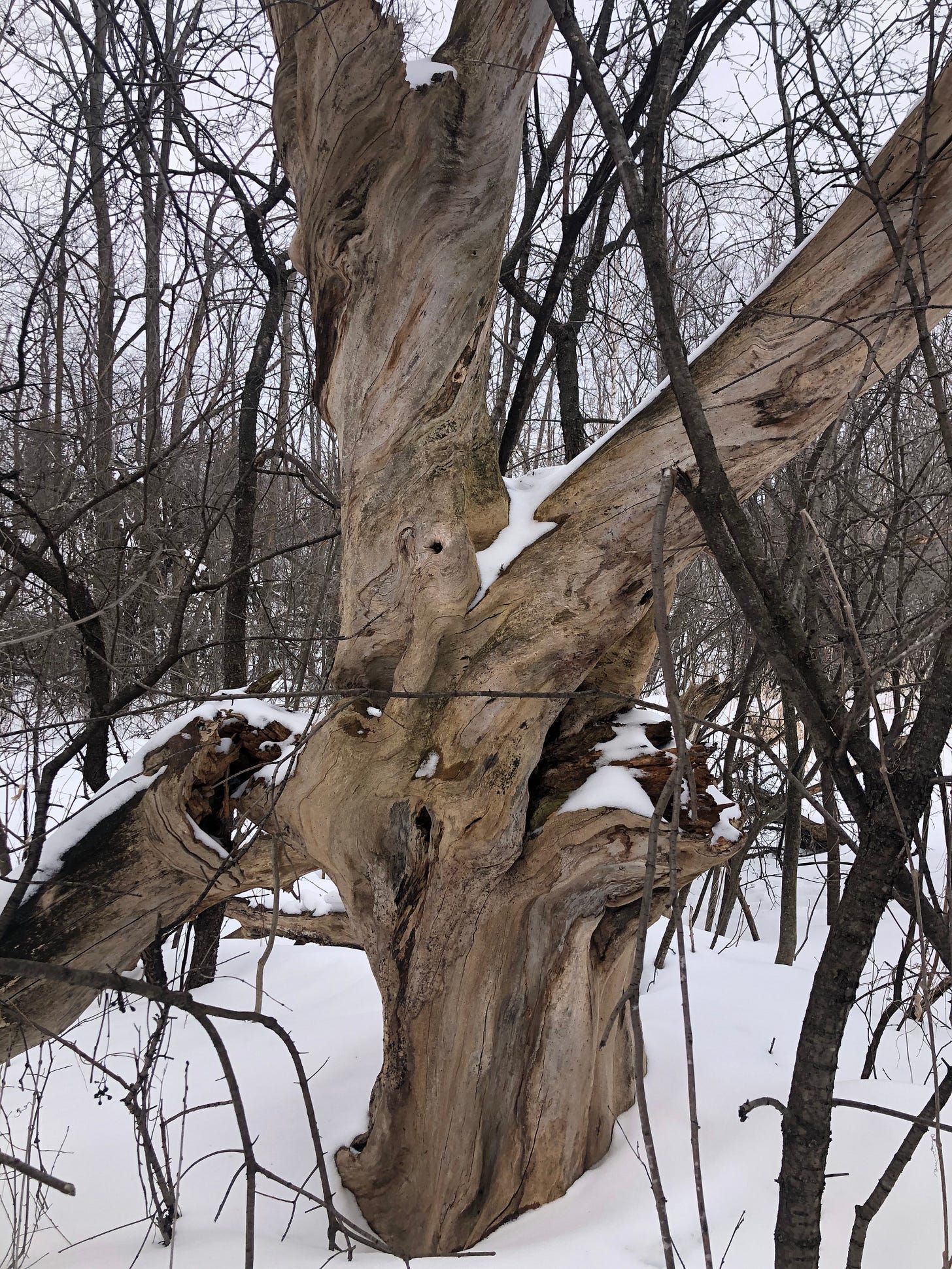Today I looked up and saw a cluster of birds, cedar waxwings, singing away in a lifeless linden tree. I marveled at the beauty of their song as they gathered together in the bleak midwinter, resting on the tree’s uppermost branches. Who knows what they were saying…perhaps relaying their solidarity with each other and instructions on how they’d stay alight here for another thirty minutes and then fly on to another location together. Perhaps they were arguing about where they would go to find a meal. Or maybe they were simply singing the song that cedar waxwings sing…a song of gratitude that they were still alive and there were no hawks or great horned owls in the vicinity.
In truth, like those cedar waxwings who, like all songbirds, must keep a close eye on the skies for predators, I have noticed on my walks that death is all around. But it is not a horrible or gruesome realization; death can be beautiful and evocative of the cycle of our time here on earth. It occurs to me that even organisms that have finished their life find a way to claim their space in our landscape, as well as provide nourishment, habitat and resting or hiding places for all manner of creatures.
I find that there is something very stabilizing about witnessing trees decay…they no longer rely on the winter melts or the spring rains to bring new foliage, nor do they boast rich greens during the summer sun or the jewel tones of autumn. They no longer depend on the vagaries of climate to stay healthy. Instead they have entered a new phase, perhaps no less important. Now they provide cavities for insects and birds, peeling bark for those making their nests, and perches for birds of prey, who use them to catch glimpses of their next meal.
They become no less important in the landscape because they have lost their ability to photosynthesize, their xylem and phloem no longer moving water, nutrients, sucrose and amino acids from their roots and leaves to keep them alive. Instead, they form either sentinels on the horizon or they recline on the ground, where their decay and replenishment of the soil takes place more quickly.
The path that I used to walk almost every morning for a few years with Skye-dog through a majestic red pine wood is now denuded of much of its cover. The trees that were tossed and shredded by last year’s derecho (you can see footage of it here) are now lying on the ground after having been downed and piled by workers to ensure they didn’t fall on passersby, human and dog alike. As I walked the other day with Scout, it was hard to know where my well travelled paths were amid all the destruction. But I do know that this thinning of the forest will allow new plants to grow, as light reaches them and the decaying trunks put nutrients back into the soil, with the help of millipedes, woodlice, beetles and slugs. I am looking forward to the new plants appearing and a new landscape resulting from the devastation.
This cracked trunk appears to be amused by its new appearance, its gaping mouth ready to welcome the birds, rodents and insects that will surely make it their home.








Share this post